Aiming for even more efficiency and quality, R.G. Hardie sharpens laser focus
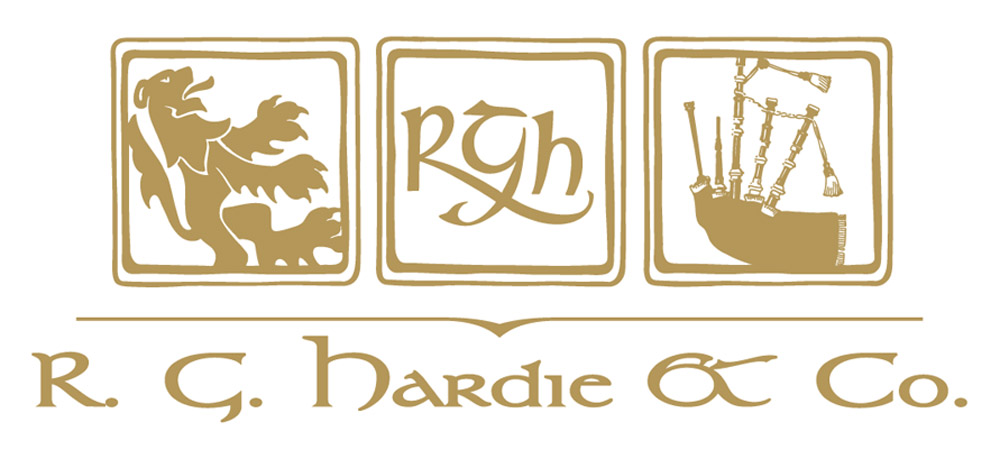 As many more bagpipe makers have entered the ever-expanding industry in the last 30 years, pipers have been presented with a dizzying variety of choices when deciding the exact make and model of Highland pipes to purchase.
As many more bagpipe makers have entered the ever-expanding industry in the last 30 years, pipers have been presented with a dizzying variety of choices when deciding the exact make and model of Highland pipes to purchase.
Variety can provide the proverbial spice to life, but R.G. Hardie & Co. of Glasgow is taking a different approach by simplifying its offerings to make choosing that much easier. Equally important, the company is enabling its worldwide network of dealers to keep in-demand Peter Henderson- and Hardie-branded pipes in stock and ready to ship to pipers eager to get their hands on their new instrument.
Even if the strategy seems counterintuitive, R.G. Hardie & Co. Managing Director Alastair Dunn believes it’s the right approach.
“We’ve undertaken a strategic revision of the Hardie and Henderson bagpipe lines,” Dunn said. “This involves refining the range to focus on core models that represent the highest standards of craftsmanship. The goal is to simplify the offering for both dealers and customers while maintaining the distinct identities of both brands.”
A Highland Society of London Gold Medallist (Northern Meeting, 2006; Argyllshire Gathering, 2009) and the pipe-sergeant of Field Marshal Montgomery for 21 years (1997-2018), Dunn has managed R.G. Hardie & Co. since 2005.
Legendary Muirhead & Sons Pipe-Major Bob Hardie launched R.G. Hardie & Co. in 1950, and in 1972 acquired Peter Henderson Ltd., the world-famous bagpipe makers whose vintage instruments from the 1890s to the 1960s have helped win more top solo prizes than any Highland pipes made.
Under Dunn’s watch, R.G. Hardie & Co. has introduced computer numerical control (CNC) and laser technology to keep its offerings at the forefront of bagpipe making.
“Streamlining the range allows us to operate more efficiently and keep costs manageable, without compromising on quality,” Dunn added. “In an industry composed almost entirely of small businesses – most with fewer than ten employees – it’s not practicable to stock an expansive array of models. By reducing the Henderson range by 15 models, we’re enabling our dealers to carry stock more effectively, rather than relying on lead times of six to 20 weeks.”
We connected with Alastair Dunn to discuss R.G. Hardie & Co.’s revamped approach to its line of Henderson and Hardie pipes by simply focusing on a smaller range of offerings.
Here’s a transcript of our discussion, edited slightly for clarity:
pipes|drums: Alastair, tell us about the announcement from R.G. Hardie & Co.
Alastair Dunn: It’s a big change for us. We’re using our 20 years of experience – at least since I’ve been here – and remodelling our Peter Henderson bagpipes, primarily, and adding a bit of that to the R.G. Hardie range. The main thing is that we’re coming up with new designs on the nickel. This is for the models PH00, PH01 and PH02.
We’re using our laser technology, which we’ve worked with for a number of years, on our Heritage sets. We felt it was time to add a bit more quality detail to our engraving designs on the nickel for the standard Henderson sets.
Part of that also involves reducing the number of options and models that we offer. We’ve done a Standard and an Antique finish on our nickel, whereas now this laser engraving has almost an antique effect. If anybody’s seen a Heritage pipe, they’ll see that. Now we have only three designs: Celtic, Thistle and the signature Renaissance set. The people we’ve shown it to really, really like that. It really stands out well, looks great.
“To be efficient and improve quality, it’s better to focus on the smaller range.” – Alastair Dunn
pipes|drums: It sounds like you’re paring back a little bit, and decided that less is more?
Alastair Dunn: To be efficient and improve quality, it’s better to focus on the smaller range. That was part of it. We’re going from 24 options for these sets down to only nine. That’s the three models, three engraving designs. The designs really stand out. That’s what we like about them. I’m sure when we see them at the games and competitions, you’ll be able to see these pipes stand out. And it’s the level of detail that we’re getting that we really like about this. We felt, let’s try and have a think about what we could do as a major change to the range. We felt this was the best way forward.
I’m really delighted with the pipes and look, as well as the engraving. We’ve also redesigned the projection mount. The projection mounts obviously protrude from the pipes, and that’s a key feature of bagpipes. This is modelled on all the different Hardies and Hendersons we’ve seen through our workshop. We do a lot of refurbishments, and it’s kind of a hybrid between the two features on the Hardie and the Henderson set.
It’s a subtle change, but I think a really important change to how our bagpipes look.
pipes|drums: R.G. Hardie was one of the first, if not the first, to incorporate your own laser engraving technology to come up with your own designs, and manufacture them yourself. That must have been a bit big benefit, too.
Alastair Dunn: Yeah, the more we’ve used it, the more we’ve learned. I think it’s about seven or eight years. The Heritage sets came out in 2018. We also laser etch into the wood. Instead of the traditional combing and beading, we have a Celtic pattern on one of the sets. And we thought, let’s just make our sets really stand out.
“We know the pipes sound great. They’ve got that powerful Henderson drone sound. This is just a change to improve the quality of the modern Henderson bagpipes.”
We’re introducing new technology, but really it’s a traditional look, you know. We’re using modern machines in terms of consistency and quality, we’re still hand-finishing everything. There’s still a lot of handwork that goes into our sets. We employ a lot of pipers, turners, and so on, so they understand the instrument. We know the pipes sound good. We aren’t changing anything in terms of the sound. They feature in Grade 1 bands, primarily Field Marshal Montgomery, who are renowned for their drone sound. Callum Beaumont and Connor Sinclair play them and are doing really well. Callum’s not long won the Glenfiddich Championship.
We know the pipes sound great. They’ve got that powerful Henderson drone sound. This is just a change to improve the quality of the sets, the modern Henderson bagpipes.
pipes|drums: On that note, could you describe the differences between Hardie, Henderson and Heritage?
Alastair Dunn: We’ve got those three: Hardie, Henderson and Heritage. They all have the same bores. It’s a mix between Henderson and Hardie. The bottom joints are what we consider to be Hardie, and then everything else is Henderson. That’s where you get that powerful drone sound. A lot of older Hendersons would have had their bottom joints changed out for the Hardie, which is a smaller bore, mostly for striking in, but the current specification of the pipes is really stable, easy to set up.
All the pipes, right through, from our Hardie zeros up to our full silvers, should in effect produce very similar sound. You’ll get a little bit of differences with wood and so on, but primarily the same powerful drone sound.
What differs are the external finishes. The external profile of the Hardies is like your traditional Hardies that you would have seen in the 1960s and ’70s. Henderson is what we know them to look like over the last 150-odd years. Not much has changed there, other than adding this new engraving and so on.
Then you’ve got the Heritage set. They’re just a bit more unique again in terms of the etched wood, the projection mount. They’re profiled on a 1910 Henderson set that came into our workshop. So subtle differences throughout the range.
By simplifying what we do, a lot of beginners and people who maybe don’t have a trained eye for these things, they don’t see a lot of the subtle differences. They might go, What’s the difference between that model and that model? And it could be as simple as that one has a nickel slide on the pin and the other doesn’t. Sometimes explaining that to customers and pipers can be a little bit tricky – why the price difference and so on. But we feel that each set in itself is unique, whether it’s imitation mounts, blackwood mounts, boxwood mounts, that we have a very good range now that we offer to everybody.
pipes|drums: There are so many varieties going on. It’s like going into the cereal aisle at the grocery store or menu at a restaurant; you don’t know where to start. Is part of your thinking to reduce it to make the choice that much easier?
Alastair Dunn: Of course. When you look at Gordon Ramsey’s “Kitchen Nightmares,” or whatever it’s called, quite often he says, “Your menu is too big. How can you possibly put out quality food?” This was a bit like that.
I feel for our worldwide dealers, who do a great job of bringing the bagpipes to all corners of the world, and they have a huge range to try to stock and supply. It’s easier to stock than made-to-order made in 12 weeks, or whatever it is, for a set of pipes. And they’re not going to just supply our pipes; they’ll supply other makers. It’s a huge undertaking. We are are technically all small businesses, so we’re just trying to take a little bit of that burden off and say, Well, this is a smaller range. It’s high quality, and that’ll be easier for them to supply these to their pipers.
pipes|drums: Thinking back to the 1950s, ’60s and ’70s, and when Robert Hardie acquired the Henderson brand. When you look at old brochures, there are basically four or five sets you can pick from. Is it going full circle to what it used to be?
Alastair Dunn: We’ve brought the Peter Henderson name back with quite a few models. The number one to number seven sets you would have seen in the old price lists. It was 1972 when Henedrson was incorporated into R.G. Hardie. My understanding is that, at the time, they would have helped each other on contracts. They were working closely together. I know Hendersons have been played in the military, and obviously Hardies have as well. They all helped each other.
Bob Hardie probably would have thought, “My pipes are the best. This is my design, and these are the best.” I can understand why he would have focused on them. But we know how popular Henderson bagpipes are. There are so many out there, and great sets of different vintages. We’re pleased that we’ve brought it all together between the two names.
“Hopefully if they were alive today, they’d be proud of what we’re doing. I wanted to go back to that.”
And hopefully if they were alive today, they’d be proud of what we’re doing. I wanted to go back to that.
pipes|drums: You’re saying that back in the 1960s, they consolidated? The pipe makers in Glasgow collaborated to fulfill big orders?
Alastair Dunn: I believe so, with the Glasgow makers. I worked with Duncan Campbell. He was taught by Bob Hardie. So he shared some stories of different things, including ivory and how they would have bought a tusk of ivory and so on to make mounts. My understandingis that they got these large orders and maybe couldn’t meet the deadline, and they would have passed some of that work out and hopefully made to their specification.
That’s why you would have seen laterally towards the 1960s and ’70s some of the pipes looked similar to the others. You might see a Henderson set from that era that looked like a Hardie set, and vice versa. It’s quite interesting when you look around at some of the old sets.
pipes|drums: That’s really interesting. On that note, you’re using serial numbers to track the pedigree of every instrument you’re making.
Alastair Dunn: We’ve done that with Hendersons from the get-go in 2006. When my set was made, as soon as I was happy with the design, I got a set of silver Hendersons, which have served me well. It’s great to have that number and then track it. Somebody could say, Well, they can register for the guarantee that we offer on the pipes while the word is settling down in different clinics and so on.
We’ve introduced that now for the Hardies as well, to track every set. If anybody has a set out there with a number at the bottom of the bass stock, they can get in touch, and we can add a note to our database that they are the owner of that set. As the pipes are passed down as heirloom instruments to generations, we can track that for them if they wish.
pipes|drums: It sounds like a big move for you. Anything to add before we wrap up?
Alastair Dunn: Just to wish everybody all the best for the season, and hopefully you’ll see a few of these sets out there. Connor Sinclair’s got a set already. He’ll be playing them in Field Marshal Montgomery this season. Look out for those
pipes|drums: We wish you all the best, and we’ll be watching closely.

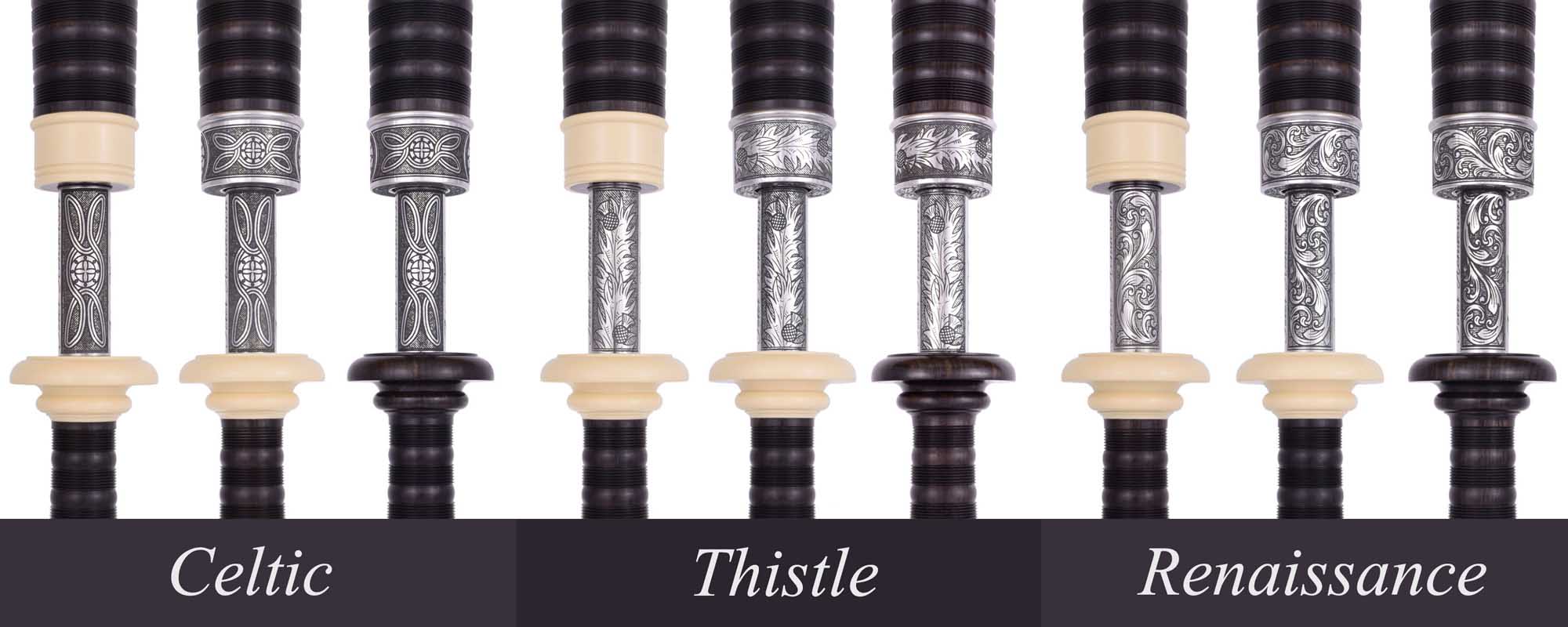

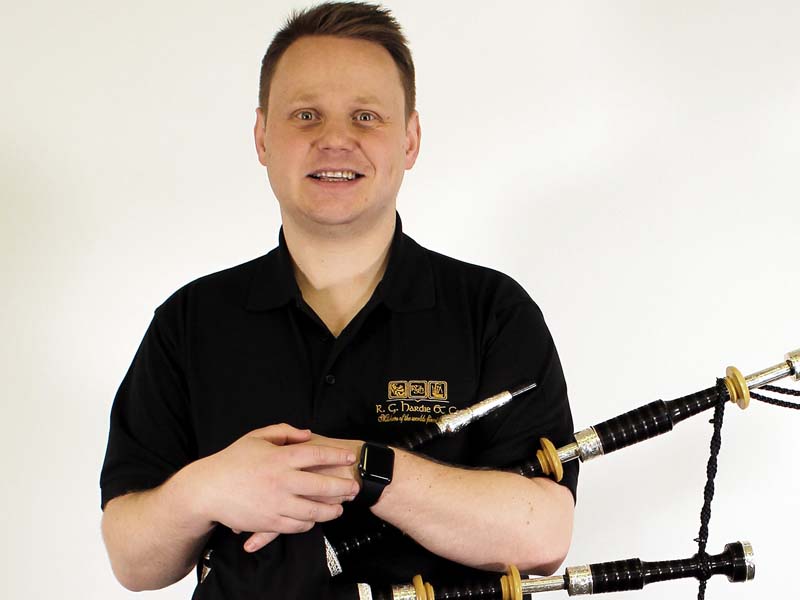
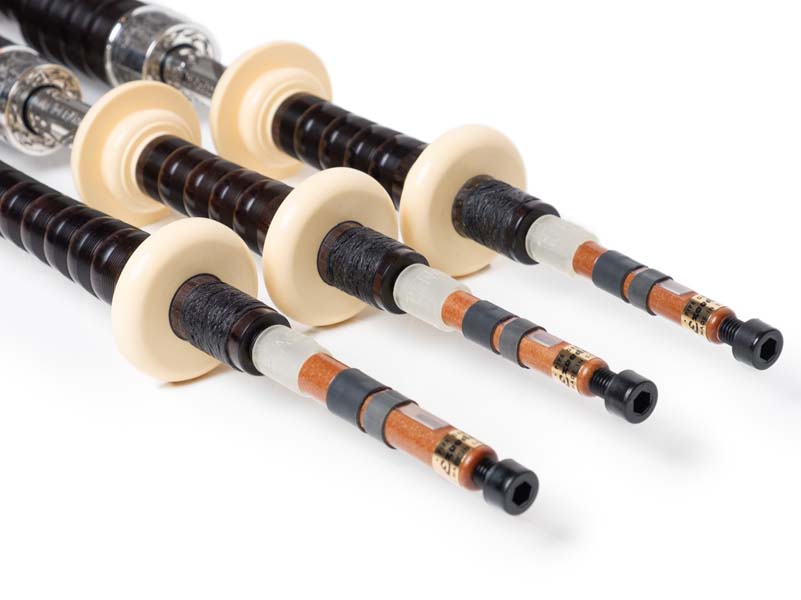
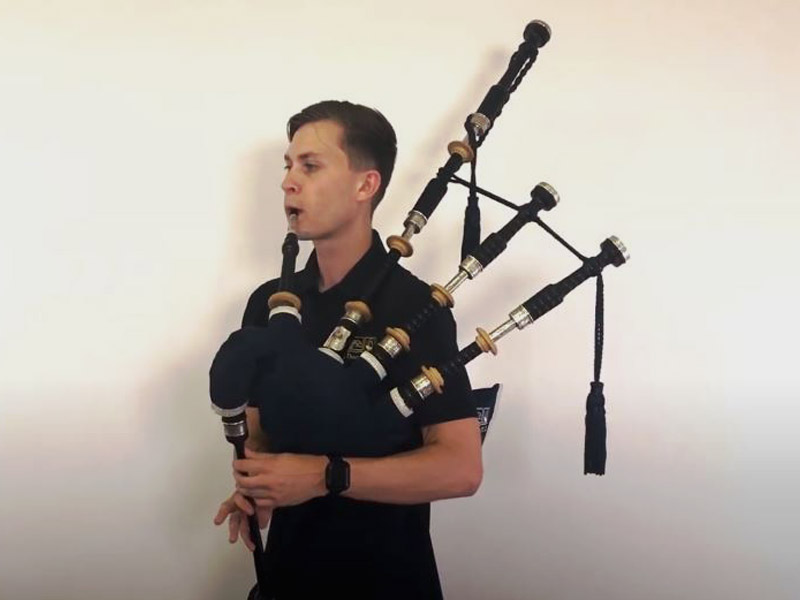
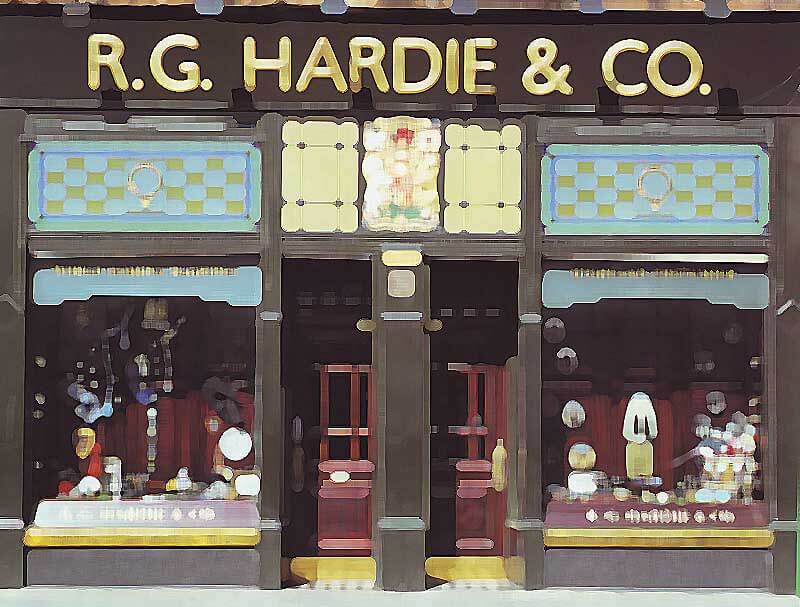
NO COMMENTS YET